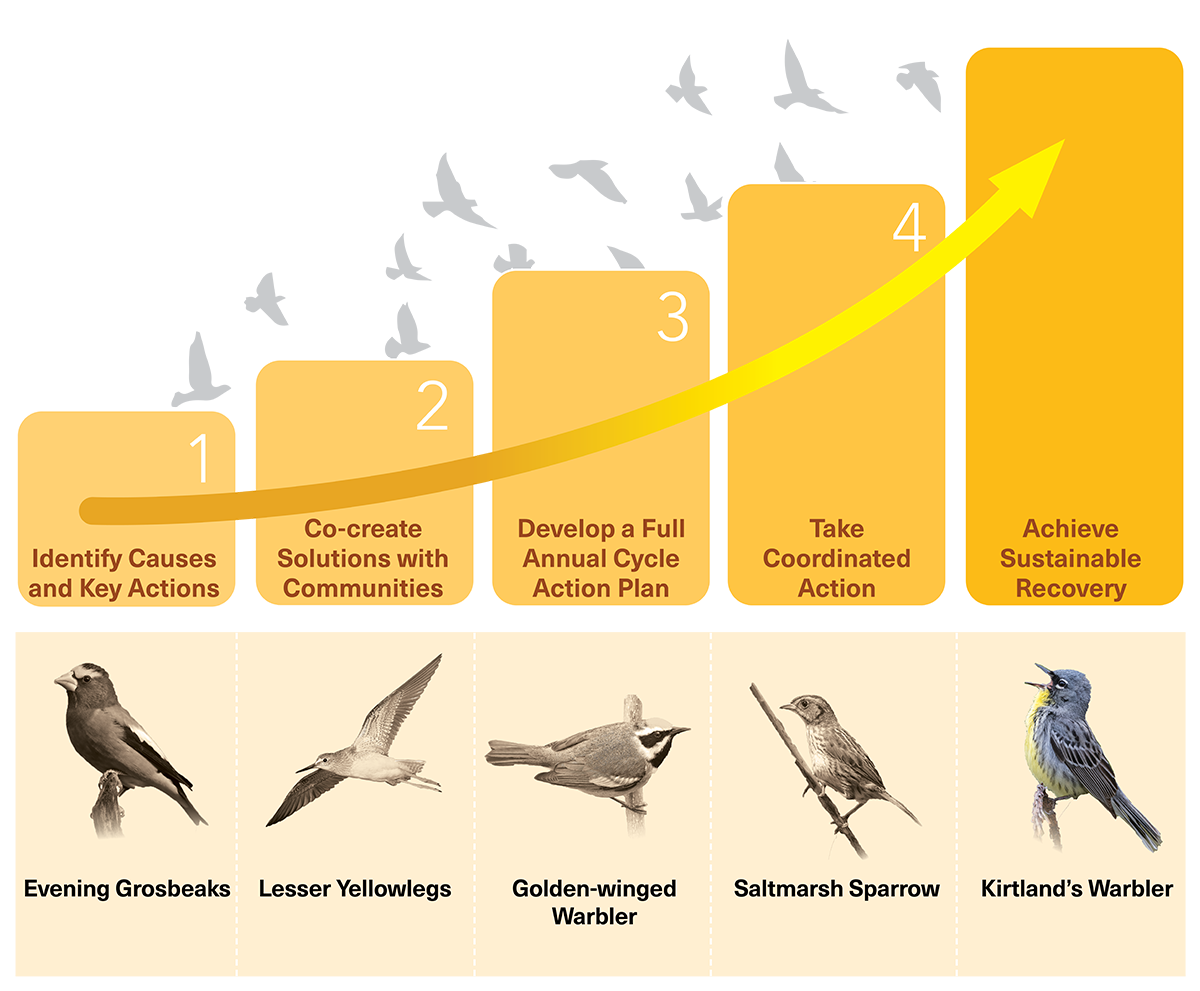The Road to Recovery
Our Best Chance for Success Is Now
Proactive conservation is the fastest, most effective strategy. Once bird species are endangered, they are at greatest risk of extinction and require additional funding, protections, and decades of work to bring them back. A strategic road to recovery will advance science-based conservation solutions and voluntary partnerships needed to tip the balance, to drive steep declines upward before birds become endangered.
One of the best examples of the potential for recovery is the once-endangered Peregrine Falcon. These consummate hunters made a dramatic comeback after biologists identified the driver of declines (DDT) and innovated a new technique for breeding Peregrine Falcons in captivity and releasing them into the wild. Applying science and conservation can help bring birds back before they become endangered—a smart and cost-effective strategy for preventing extinction.
The Road to Recovery
- Invest Now for the Biggest Payoff. Support capacity and strong public-private partnerships to keep birds from becoming endangered. Reversing declines of birds across habitats can boost wildlife and quality of life for people in all 50 states.
- Power Up New Science and Technology for Precision Conservation. Unite research discoveries, emerging technologies, and social sciences to pinpoint acute causes of species declines and reveal data-driven insights for reversing those trends.
- Co-Create Solutions with Communities and International Partners. Generate solutions that work, based on collective knowledge, participation, and mutual goals from communities, businesses, scientists, land managers, and decision-makers.
A Strategy to Reverse Declines
A strategic approach to bird conservation is needed to arrest declines of birds before they reach crisis levels. Science, technology, and insights from social science must be applied to fill data gaps, and solutions must be co-created with diverse groups of people impacted by conservation strategies.

- Identify Causes and Key Actions. Support or establish working groups that apply new science, technology, and social science to identify the causes of declines and the human dimensions of conservation solutions. Example: Evening Grosbeaks have declined by 90% since 1970. Scientists are working to understand why.
- Co-Create Solutions with Communities. Shape solutions with those affected: landowners; local, underrepresented, and Indigenous communities; scientists, agencies, and decision-makers. Example: Lesser Yellowlegs will benefit from conservation plans that work with communities toward socioeconomic and cultural solutions for sustainable harvesting.
- Develop a Full Annual Cycle Action Plan. Generate effective business plans and timelines, working with communities across the life cycle of birds. Example: Golden-winged Warbler management guidelines pinpoint and seek to address limiting factors on both breeding and wintering grounds.
- Take Coordinated Action. Implement solutions with participation from communities and cross-sector partners. Monitor and adjust if needed to reach goals. Example: Saltmarsh Sparrow recovery is possible with prioritized actions to address sea-level rise across more than a dozen states identified by the Atlantic Coast Joint Venture.
- Achieve Sustainable Recovery. Healthy populations and increasing or stable numbers indicate successful recovery. Example: Kirtland’s Warbler was removed from the Endangered Species list in 2019 after years of collaborative conservation efforts.
